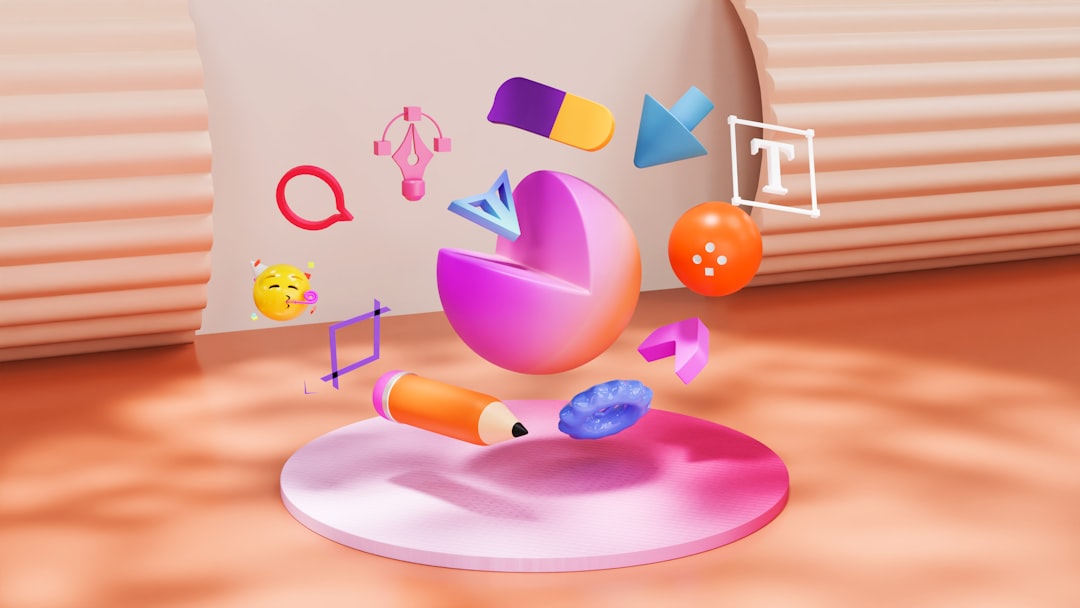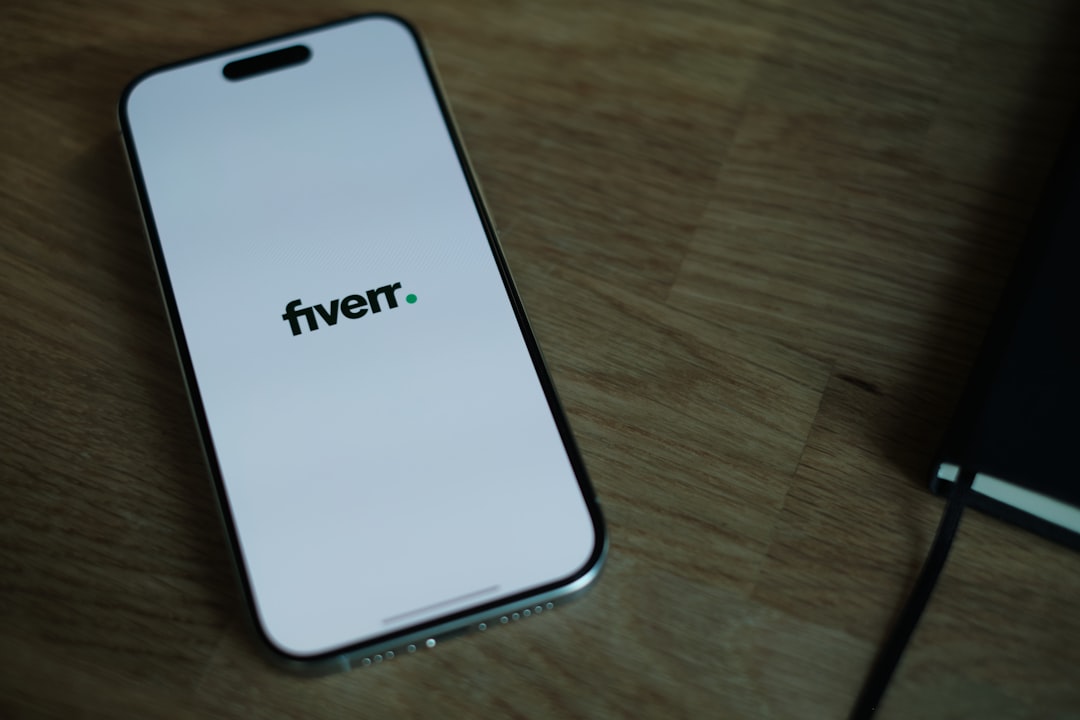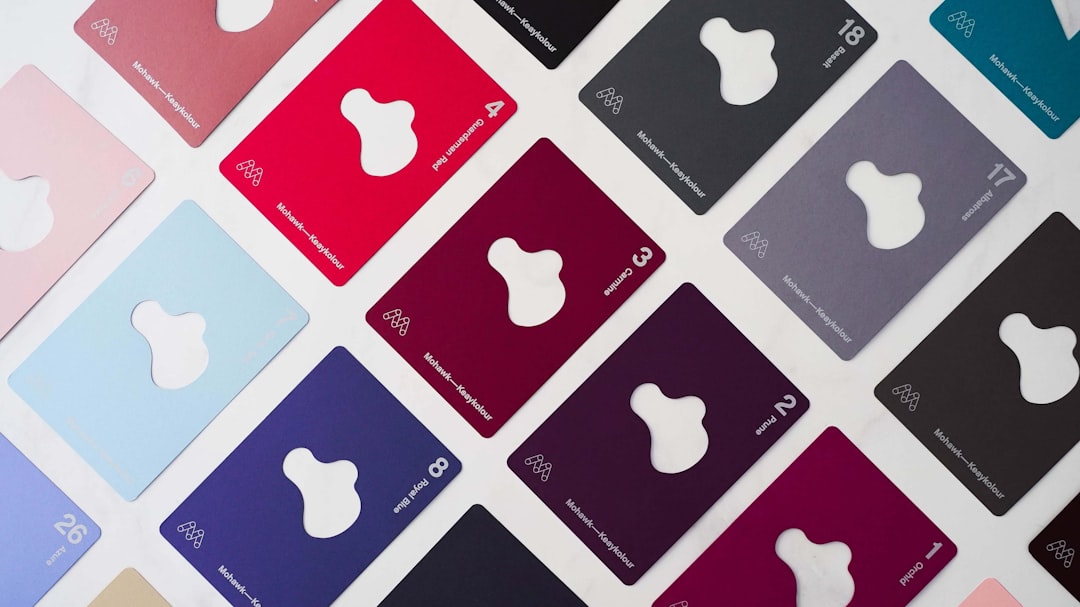The ultimate overview: Design system and design tokens explained
The ultimate overview: Design system and design tokens explained. Comprehensible introduction to the concepts, benefits and application of design systems.

Introduction to design systems and design tokens
Design systems and design tokens are among the most important elements in modern product development and user interface design. Together, they help us develop consistent and efficient designs that are scalable and easy to adapt. In order to fully grasp their significance, we should both understand their foundations and link their role.
What is a design system?
A design system is a comprehensive collection of standards, guidelines, and components that help us create consistent digital experiences. It includes reusable UI components such as buttons, typography, colors, and spacing, as well as the principles that define their use. The aim of a design system is to optimize collaboration between design and development teams while increasing the quality of the end product. By using a centralized system, we can work faster and ensure consistency across projects.
What are design tokens?
Design tokens act as the basic building blocks of a design system. They are structured and abstract values—usually colors, fonts, spacing, or shading—that help us standardize and automate specific design decisions. For example, with a design token for the primary color, we can ensure that it appears consistently across different platforms, regardless of technical constraints or requirements.
How do design systems and design tokens interact?
Design systems and design tokens work closely together. While design tokens represent individual properties, design systems are the larger framework that contains these tokens and defines their areas of application. Design tokens enable us to scale the design system by more efficiently managing the variables that are used in various products and platforms. They are particularly valuable for configuring and adapting a design system, as they can be used flexibly in different contexts.
By implementing these two concepts, we can ensure that design processes remain structured, adaptive, and long-lasting.
Why design systems are crucial for your website
A design system ensures that we maintain visual consistency and functionality across all aspects of a website or application. It is a central library of components, guidelines, and styles that enables a team to work more efficiently and minimize errors. With a well-structured design system, we create a uniform basis that unites both designers and developers and promotes a seamless workflow.
With a design system, we benefit from numerous advantages:
- standardizing: We establish a clear and consistent design language. Each component, whether button, form or navigation element, is defined and documented so that misunderstandings about the design are avoided.
- scalability: As requirements grow, we can easily integrate new features without overwriting or developing new ones. This saves time and resources.
- Usability and accessibility: With the help of design systems, we can ensure that elements are user-friendly and accessible across different platforms. Predefined guidelines mean fewer improvements.
- saving time: Instead of repeatedly designing or developing identical elements, we use prefabricated components. Teams can focus on more complex tasks.
With a design system, we not only create design coherence, but also stronger collaboration within our teams. By defining a common language, we reduce communication difficulties between design and development.
In addition, design systems enable us to react more quickly to changes. Whether on a visual level or in terms of functionality, a central structure gives us the flexibility we need for continuous improvement. It becomes clear that without a design system, the process becomes fragmented and inefficient, which can affect quality in the long term.
What are design tokens? An overview
When we talk about design tokens, we mean the smallest building blocks of a digital design system. Design tokens are systematically defined values that represent essential design properties such as colors, typography, distances, shadows, or sizes. They act as a bridge between design and development by ensuring that visual and functional consistency is maintained in products.
For example, design tokens can refer to the following attributes:
- colors: Primary and secondary colors, shades, background colors, or text colors.
- Typography: Fonts, font sizes, line heights, and letter spacing.
- distances: Margins, paddings, and gutter values for layout elements.
- Shade: Settings for drop shadows and other visual effects.
- sizes: Widths and heights of elements, icons, or other UI components.
We use design tokens because they offer flexibility and are easy to update. If, for example, the corporate color palette changes, we just need to adjust the corresponding token, and the change is automatically reflected in the entire user interface. This not only reduces workload, but also prevents inconsistencies in design.
Another advantage is cross-platform usability. The tokens are defined independently of specific technologies, meaning that they can be used in web, mobile, or desktop applications.
The organization is often hierarchical. For example, a global token could define a primary color, while a specific token sets that color for buttons or links. This allows us to maintain a clean structure that helps both developers and designers work efficiently.
The benefits of design tokens in web design
Design tokens provide a structured approach to ensure consistency and efficiency in web design. They represent key design elements such as colors, typography, spacing and more in a standardized and easily transferable form. With their help, we significantly facilitate the implementation and maintenance of a design system and create a robust basis for scalable and flexible designs.
Consistency benefits
A key advantage of design tokens is their ability to promote consistency across different projects. By recording key design values such as fonts, color palettes or shadows in clearly defined tokens, we prevent discrepancies between different design and development environments. As a result, our visual identity remains the same regardless of how many teams or platforms are working on it.
Improved scalability
Design tokens make it easier to scale large and complex design systems. We can add new components or features more quickly without affecting existing designs. In addition, the use of tokens enables efficient adaptation to new requirements, such as adding a dark mode or adjusting color values locally.
Simplified collaboration
Design tokens create a bridge between design and development. When we standardize design elements into tokens, developers and designers can access the same references. This makes communication easier and reduces misunderstandings. This common language is particularly important when we work in cross-functional teams.
Adaptability and reusability
Another advantage is that it is easy to reuse. Since design tokens are independent of specific technologies or frameworks, we can use them in various projects or platforms. If requirements change, for example as a result of a rebranding process or new device requirements, the tokens can be updated centrally without having to manually adjust individual components.
Increasing efficiency
Ultimately, design tokens contribute massively to the efficiency of our work processes. By automating design changes, we minimize manual effort and shorten development times. Changes can be made globally, which makes it easier to maintain and develop the design and reduces costly errors. As a result, we remain competitive in dynamic digital industries.
Interactive and consistent user experience through design systems
A design system forms the basis for a consistent and well-thought-out user experience in digital products. With a well-structured design system, we not only create uniform visual and functional elements, but also set clear standards that enable design and development teams to work together efficiently. This minimizes inconsistencies and ensures that users get the same high-quality experience regardless of whether they're using a website, an app, or another digital platform.
By introducing a design system, we standardize various components such as buttons, typography, color palettes and layouts. These fixed components are repeated and thus guarantee coherence throughout the product. The modularity of a design system helps us to react flexibly to changes without having to create new solutions from scratch. Instead, we use standardized components, which we can adapt and reapply as required.
Interactivity plays a central role here. We make sure that design systems can be experienced — whether through realistic prototypes or lively style guides. In this way, we enable teams to better anticipate user behavior and obtain feedback at an early stage. Movements, animations and micro-interactions are also defined as part of the system to ensure smooth and pleasant use.
Another advantage lies in seamless cooperation between design and development departments. With the help of a design system, we reduce communication gaps, as all parties involved draw on the same guidelines and references. In this way, we not only ensure efficiency in processes, but also a user experience that is self-contained and attractive.
A consistent experience and intuitive interactions are the goal that we consistently pursue through the use of a design system.
How design tokens can save time and resources
Design tokens are an essential part of modern design systems that help us maximize efficiency and consistency in the design process. They function as central variables for design elements such as colors, fonts, spacing and much more. By implementing them, we can significantly reduce time and resources, particularly when working together between teams of designers and developers.
Consistent design and reusability
By using design tokens, we ensure that fundamental design decisions are always implemented consistently. Instead of defining the same values multiple times in different places, we draw on a single source of truth. For example, colors that are defined as tokens are used equally in design software and code. This not only saves work, but also reduces the risk of errors during implementation.
Automated updates and scalability
Scalability is another advantage. When we make changes to a token, such as a primary brand color, that color automatically updates wherever it's used. This eliminates the need to manually update each individual area. This is not only efficient in small projects, but also for complex design systems involving various platforms and teams. This enables us to make adjustments quickly and with minimal effort.
Collaboration across teams and consistency
Direct benefits are reflected in improved collaboration between design and development teams. Design tokens are understandable for both disciplines and create a common basis for communication. As a result, we create a language that both designers and developers understand, which significantly simplifies the coordination processes. The result is a consistent user experience that is easier to maintain.
Reduced documentation costs
Since Design Tokens are self-documenting, we minimize the effort of manually creating and maintaining separate style guides or documentation. Changes to the design system are directly reflected by the tokens without the need for redundant documentation steps. This saves time and prevents outdated documentation.
Through these practical benefits, we not only increase efficiency but also the quality of our design systems, while reducing workload and making optimal use of resources.
Examples of successful implementation of design tokens
When looking at organizations that have successfully implemented Design Tokens, we can gather valuable insights and best practices. These examples illustrate how design tokens improve efficiency and consistency in design and development processes.
Airbnb: scalability through tokens
Airbnb is one of the pioneers when it comes to integrating design tokens into a comprehensive design system. They used tokens to define colors, typography, and spacing in their system. As a result, we were able to see how a design language, once defined, was uniformly applied across different platforms, from web to mobile. Airbnb's success clearly shows how design tokens can promote scalability.
Shopify Polaris: Ecosystem Consistency
Shopify has delivered an impressive implementation with its “Polaris” design system. They used tokens to standardize basic design values, such as color palettes, font sizes, and shading. Thanks to these tokens, we were able to see how brand consistency was ensured across hundreds of integrations. This was a key factor for Shopify's growing developer community.
IBM Carbon: Flexibility for platforms
The IBM Carbon Design System offers another successful example. IBM relied on a token-based system to enable flexible customization for various platforms and applications. Here we learned that tokens not only provide visual consistency, but also promote accessibility, for example by defining barrier-free color contrasts.
Salesforce Lightning: Expedited Workflows
Salesforce implemented design tokens in its Lightning Design System platform to create efficient workflows. We were able to see how tokens enabled developers to implement design changes quickly and consistently without having to manually adjust every component.
These examples show how companies can optimize their processes and create a consistent user experience through the use of design tokens, regardless of scale and complexity.
Step-by-step guide to building a design system
A design system provides a central basis for consistent design and collaboration between design and development teams. In order to create a solid and effective design system, we follow a clearly structured procedure:
- Define goalsBefore we start, we determine the purpose and goals of the design system. Do we want to create consistency between different products, shorten development times, or should teams work together more efficiently? Clear goals make it easier to set up and later develop.
- Carry out an auditA comprehensive design audit is essential. We analyze existing designs, identify redundancies, inconsistencies, and commonly used patterns. This gives us a solid basis for creating a uniform library.
- Define design principlesWe define key design principles that form the basis of our system. These principles guide decisions and ensure that all elements meet specific standards, such as accessibility, scalability, and reusability.
- Create visual and functional elementsWe then start creating core components, such as color palettes, typography, buttons, and icons. Each component is described and documented in detail so that all team members can easily understand and use it.
- Introduce design tokensWe develop design tokens to incorporate design details such as colors, spacing and font styles into our technical systems in an abstract and structured way. This makes it easier to synchronize design and code.
- Create documentationWell-maintained documentation is essential. We ensure that every element and policy of the system is clearly described and remains easily accessible. Tools such as Storybook or Figma can help here.
- Encourage team communicationWe actively involve design and development teams in the process, regularly collect feedback, and set up channels for questions and support. A design system depends on its acceptance and continuous optimization.
- Continuously updateA design system should be flexible and adaptable. With a plan for continuous maintenance and updates, we respond to new technological and business requirements to remain relevant over the long term.
By consistently implementing these steps, we ensure a robust and efficient design system that meets all project requirements.
The role of development and design teams when using design tokens
If we want to successfully use Design Tokens in a project, close collaboration between development and design teams is essential. Both teams play a decisive role in this, which complement each other and enables the smooth use of design tokens.
First, as a design team, we lay the groundwork by defining uniform visual and functional guidelines. Design tokens represent these basic elements, such as colors, fonts, and spacing, in an abstract form. We ensure that the tokens are consistently designed and documented. This consistency ensures that developers also have a clear basis.
On the other hand, developers are responsible for integrating these tokens into the code base. By communicating closely with developers, we can ensure that the values set out in the design are implemented correctly. Developers use these design tokens not only to ensure consistency in the user interface, but also to make development processes more efficient. Tokens make it easy to refactor code and allow you to quickly customize style elements globally.
To facilitate collaboration between both teams, we often use tools such as Style-Dictionary or similar platforms. These help us to provide and synchronize design tokens across platforms. We make sure to set up regular feedback processes to ensure that design and development move forward in an iterative approach.
Finally, it is crucial that we jointly promote training and workshops to ensure a consistent understanding of Design Tokens. Only through this partnership-based approach can we ensure that Design Tokens are used effectively.
Future outlook: Development of design systems and tokens
The world of design is developing rapidly, and we are faced with exciting perspectives on how design systems and tokens will be transformed in the coming years. Design is no longer static, but adapts to dynamic requirements, which increases the need for flexible and scalable solutions.
An important development concerns the increasing automation and integration of tokens into development and design processes. We're already seeing how design tokens are automatically generated from design tools such as Figma or Sketch and seamlessly transferred into code. The next phase will include an even deeper link between design and development, in which artificial intelligence (AI) plays a central role. AI could not only help identify optimal design patterns, but also make suggestions for tokenized implementation.
Another area of development concerns the universality of tokens. We are watching cross-platform standards emerge that ensure that design tokens are compatible with a wide range of frameworks and technologies. Standardization could help us avoid inconsistent implementations and establish uniform design languages.
Sustainability and accessibility are also gaining in importance in design. In the future, it is expected that we will increasingly work with tokens that have been developed specifically to optimize usability — for example through contrast or font size adjustments. Ecological aspects could also be incorporated by designing colors and contrast ratios on the development side in such a way that they minimize the energy consumption of displays.
In parallel, the use of theme-based tokens. With these, we can implement individual brand identities more efficiently without touching the basic structure of a design system. This approach also offers huge benefits for multinational companies, as regional adjustments can be made quickly and cost-effectively.
Finally, it should be noted that design systems and tokens are not simply technical tools. They shape the way we design digital products and how we enable interaction with users. We are only at the beginning of a long-term transformation that challenges and inspires both designers and developers.





